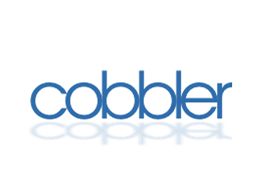
A little while ago I started a little project to build a cobbler server using Centos 6.3 on a VirtualBox VM to test builds. Here are my notes for that, though they may, of course, be out of date now. Hopefully still useful for reference though.
Ingredients for VirtualBox:
- Minimal Centos 6.4 install.
- 512M RAM
- 2 x network cards
- One is host-based and will have the static IP 192.168.56.102
- One is bridged to iMac eth0 and will have DHCP enabled
- 1 x 8G filesystem for the OS
- 1 x 10G filesystem for /opt/cobber_data
- Defaults for all else.
Method:
After cloning, edit /etc/udev/rules.d/70-persistent-net.rules deleting the entries for eth0 and eth1 (this parent VM’s NICs) and changing the remaing eth2 and eth3 to eth0 and eth1. Edit /etc/sysconfig/network-scripts/ifcfg-eth0 and ifcfg-eth1 to use the same MAC addresses. Then reboot.
Once restarted and networking is running correctly we need to add the EPEL repo in order to get the cobbler packages.
rpm -Uvh http://download.fedoraproject.org/pub/epel/6/i386/epel-release-6-8.noarch.rpm |
Make sure the Centos DVD iso is mounted at /cdrom:
mount -o ro /dev/cdrom /cdrom |
Create the /opt/cobbler_data filesystem using the second PV:
pvcreate /dev/sdb vgcreate cobblervg /dev/sdb lvcreate -L 9G -n cobblerlv cobblervg mkfs -t ext4 /dev/cobblervg/cobblerlv mkdir /opt/cobbler_data add mount to /etc/fstab mount /opt/cobbler_data rm -rf /var/www/cobbler/ks_mirror ln -s /opt/cobbler_data /var/www/cobbler/ks_mirror/ |
Update the O/S and install cobbler:
yum update yum -y install cobbler cobbler-web dhcp |
Configure cobbler:
sed -i 's/authn_denyall/authn_configfile/g' /etc/cobbler/modules.conf htdigest /etc/cobbler/users.digest "Cobbler" cobbler |
Change the password as required.
More configs:
sed -i 's/server: 127.0.0.1/server: 192.168.56.103/g' /etc/cobbler/settings sed -i 's/pxe_just_once: 0/pxe_just_once: 1/g' /etc/cobbler/settings sed -i 's/anamon_enabled: 0/anamon_enabled: 1/g' /etc/cobbler/settings sed -i 's/manage_dhcp: 0/manage_dhcp: 1/g' /etc/cobbler/settings |
Edit /etc/cobbler/dhcp.template for network subnet to administer (if there isn’t already a DHCP server doing this)
sed -i 's/next_server: 127.0.0.1/next_server: 192.168.1.1/g' /etc/cobbler/settings |
Stop selinux by editing /etc/selinux/config and change from enforcing to disabled.
Reboot.
Set startups for services:
service start httpd chkconfig httpd on service cobblerd start chkconfig cobblerd on |
Start cobbler:
cobbler get-loaders |
Install debmirror. pykickstart and cman (ensure CentOS cdrom is mounted):
yum -y install debmirror pykickstart cman |
Comment ‘dists’ and ‘arches’ on /etc/debmirror.conf
Save and stop iptables (for testing):
/etc/init.d/iptables save /etc/init.d/iptables stop chkconfig iptables off |
Create a new encrypted password for the /etc/cobbler/settings_default_password_crypted entry:
openssl passwd -1 |
Sync and restart Cobbler:
/etc/init.d/iptables save /etc/init.d/iptables stop chkconfig iptables off |
In /etc/xinetd.d/tftpd change ‘disable’ to ‘no’, then restart with:
service xinetd restart chkconfig xinetd on |
Import the CentOS DVD with (user minus minus for the options here):
cobbler import –name=centos63 –path=/cdrom |
Create a new cobbler system called centos63 with the centos63-i386 profile and the target IP address.
Create a new virtualbox guest, boot and F12, select l for LAN and it should get an IP from the DHCP server, then present a cobbler menu for you to choose the profile, and off it goes.
Now you could also add puppet:
yum -y install puppet puppet-server |
And if you wanted to add the desktop environment to Centos:
Ensure the CentOS DVD is mounted and the cdrom repo enabled (/etc/yum.repos/cdrom) and do
yum groupinstall basic-desktop desktop-platform x11 fonts |
